1. Introduction
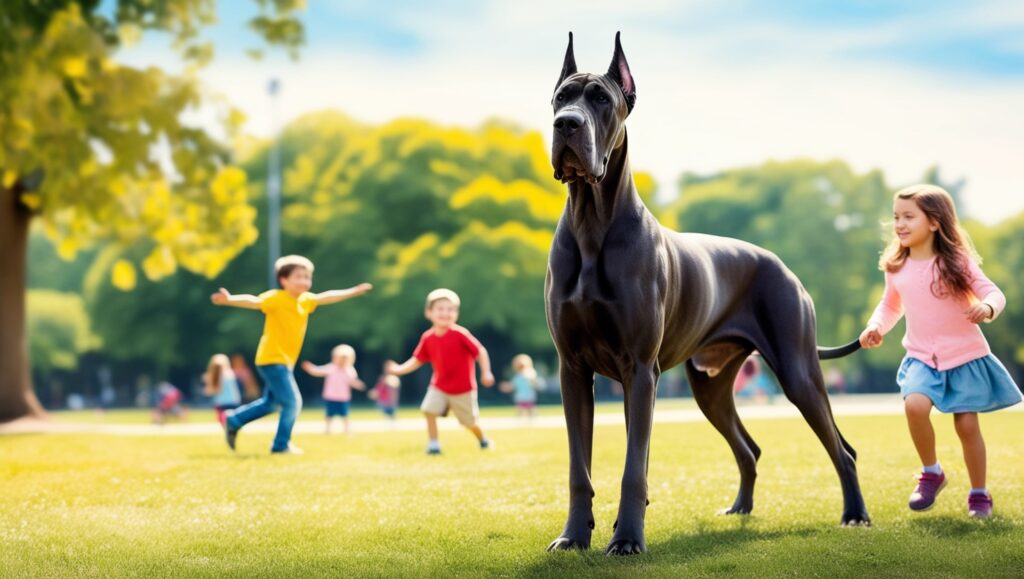
The Great Dane also referred to as the “Apollo of dogs,” is a breed known for its impressive appearance and enormous size. They were originally bred as hunting dogs in Germany, these gentle giants are now famous for their friendly and affectionate nature. Despite their imposing stature, with males standing up to 32 inches at the shoulder and weighing between 140-175 pounds, Great Danes are incredibly gentle and known for their loyalty. Their short coat, which comes in a variety of colours makes them a standout in any setting. With proper training and care, they make loving, protective family companions.
2. History and Origins
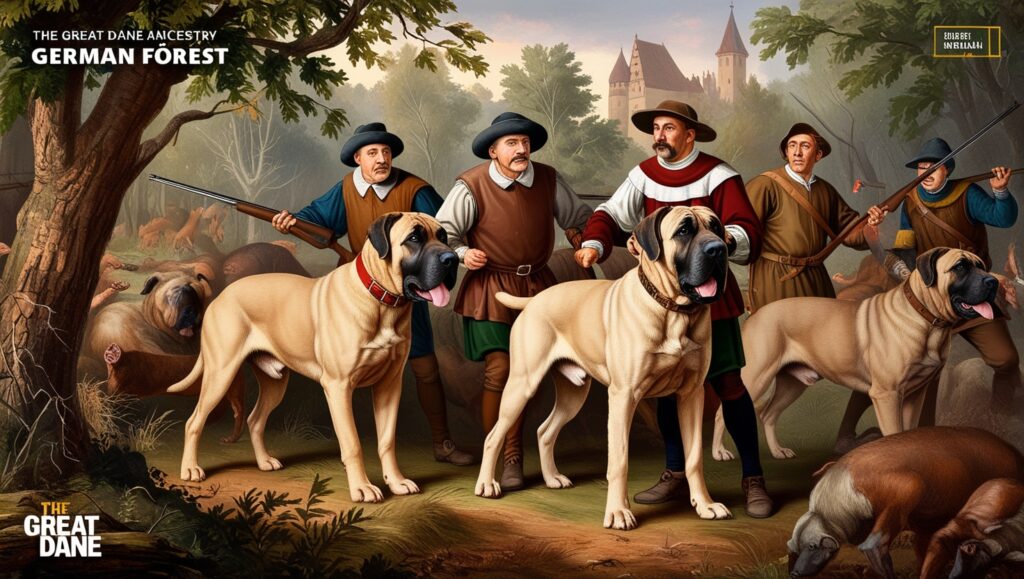
The Great Dane is a breed of dog that originated in Germany, where it is known as the “Deutsche Dogge.” Despite its name “The Great Dane”, this Dog breed has no historical connection to Denmark. The Great Dane’s ancestors are thought to have been large mastiff-type dogs that were bred for hunting large game like wild boar, in the Middle Ages. Over the years breeders in Germany refined the breed to be both powerful and elegant, focusing on size, strength, and appearance. The modern Great Dane we know today developed in the 19th century. Its name was likely influenced by a French naturalist, Georges-Louis Leclerc, who travelled to Denmark and referred to these large dogs as “le Grand Danois” (the Great Dane) in his writings, which ultimately stuck even though the dog was not Danish. The breed is known for its gentle temperament, often referred to as the “gentle giant” due to its friendly and calm nature despite its imposing size.
3. Physical Characteristics
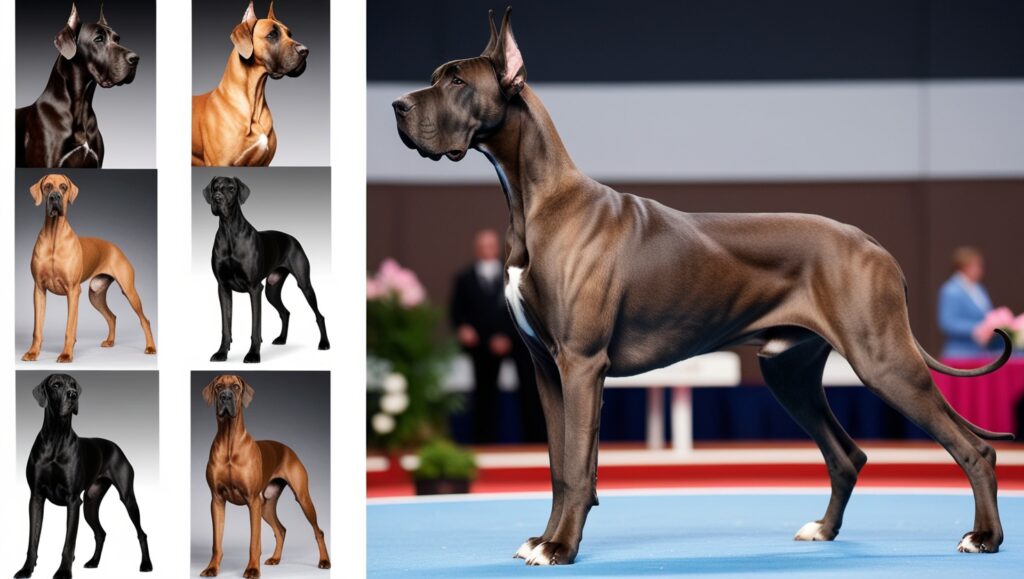
Great Danes are known for their impressive size and elegant appearance. They are one of the largest dog breeds, with males standing at 30-34 inches tall and females standing at 28-32 inches. Males weigh 120-200 lbs, and females weigh 100-130 lbs. They are Muscular, well-proportioned, and sleek. Their Head is Long and narrow with a strong jaw, prominent nose, and deep-set eyes. Their Ears Can be cropped to stand upright or left natural, in which case they fold over. Their Coat are Short, smooth, and come in various colours, including fawn, brindle, black, blue, harlequin, and mantle. Their tail is Long and slightly curved. Despite their large size, Great Danes are known for their grace and regal presence.
4. Temperament and Personality
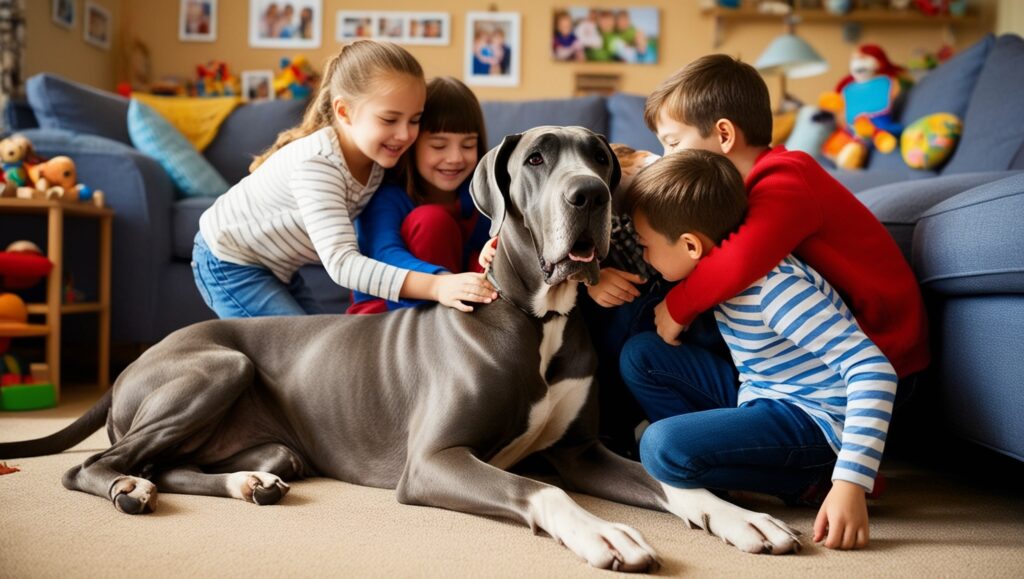
Great Danes are known for their gentle, friendly, and affectionate temperament. Despite their imposing size, they are often referred to as “gentle giants.”. They form strong bonds with their families and enjoy being close to people, often acting like lap dogs despite their size. They are known for their calm and patient nature, especially around children, making them great family pets. They are Very protective of their loved ones, yet generally non-aggressive unless provoked. They usually get along well with other pets and enjoy meeting new people. They are Intelligent, and they are easy to train but may need consistent guidance due to their size. While they are playful as puppies, adult Great Danes tend to be relatively laid-back and enjoy lounging. Their temperament makes them excellent companions, blending elegance with a kind, easy-going nature.
5. Training and Exercise Needs
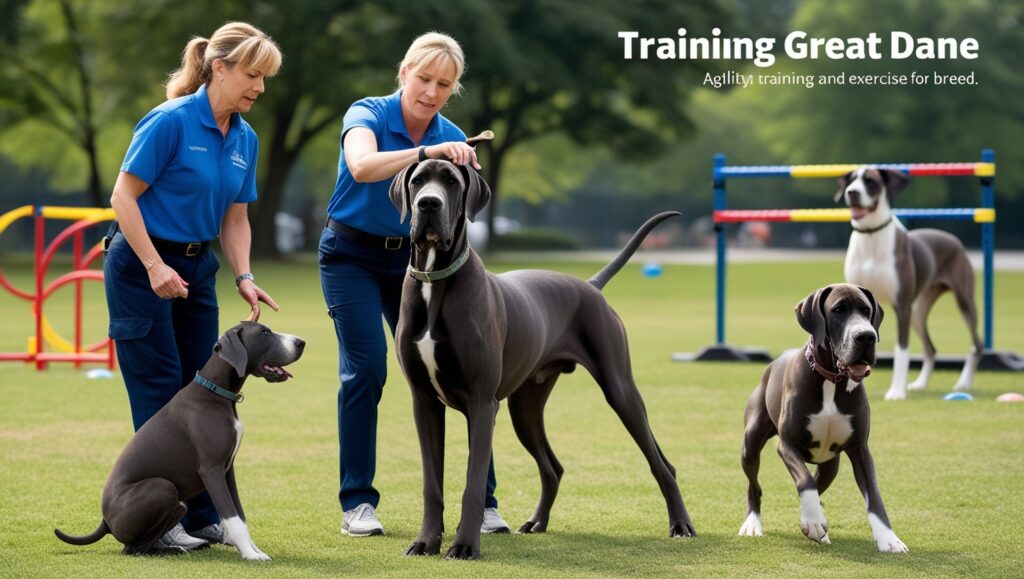
Great Danes have moderate training and exercise needs. Here’s what to know:
Training:
Great Danes need obedience training and socialization early due to their size and strength. It’s important to teach them basic commands as puppies. They respond best to gentle, positive reinforcement like praise and treats, as they are sensitive and may not respond well to harsh training methods. Be consistent with rules and boundaries to help manage their size as they grow. Exposure to different environments, people, and animals early on will help them become well-adjusted and calm adults.
Exercise:
- Great Danes require daily walks and moderate activity to maintain their health, but they don’t need intense exercise. Around 30-60 minutes of exercise per day is sufficient. Avoid strenuous activities, like running or jumping, especially when they are young, as their joints are still developing and can be prone to injury. Include mental exercises like puzzle toys or training games to keep their minds sharp. Though Great Danes need regular activity, they are generally calm and enjoy relaxing at home, balancing exercise with plenty of downtime.
6. Health and Lifespan
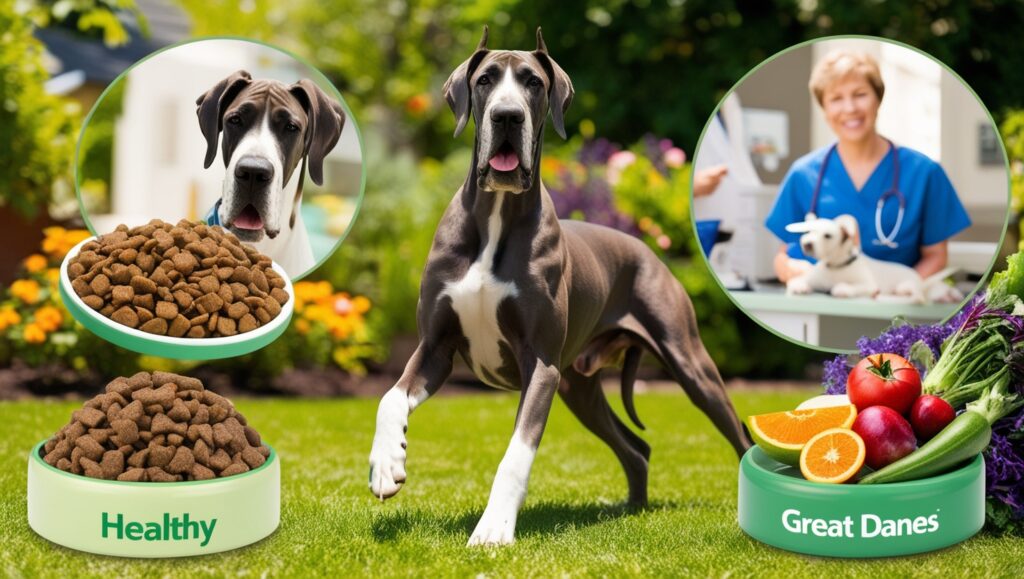
Great Danes are generally healthy dogs, but their large size makes them prone to certain health issues. Here are key aspects of their health and lifespan:
- Common Health Issues:
Hip Dysplasia is A genetic condition that affects the hip joints, causing discomfort and mobility issues. Bloat (Gastric Dilatation-Volvulus) is A life-threatening condition where the stomach twists and fills with gas. It requires immediate medical attention. They are prone to dilated cardiomyopathy (DCM), a condition that weakens the heart muscle. Bone and Joint Problems Due to their size, they may suffer from arthritis, especially as they age. Wobbler Syndrome is A neurological disorder that affects the spine and can cause coordination issues.
- Lifespan:
Great Danes typically live 7-10 years, which is shorter than most dog breeds due to their size. Regular vet check-ups, a healthy diet, and moderate exercise can help manage these health concerns and improve their quality of life.
7. Grooming and Maintenance
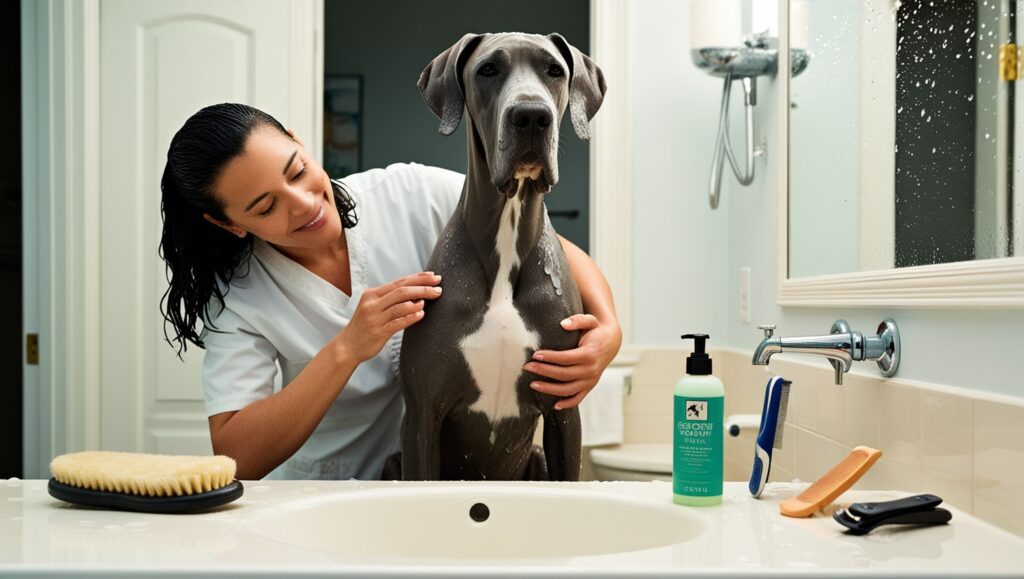
Great Danes have relatively low grooming needs, but regular care is essential for their well-being. They have short, smooth coats that are easy to maintain. Weekly brushing with a soft-bristle brush or grooming glove helps remove loose hair and keep their coat shiny. Bathing is only needed occasionally, typically every 6-8 weeks, unless they get particularly dirty. Their nails grow quickly and should be trimmed regularly (about every 2-3 weeks) to prevent cracking or overgrowth. Clean their ears weekly to prevent infections, especially if their ears are uncropped, which can trap moisture. Brush their teeth a few times a week to maintain dental health and prevent tartar buildup.
Maintenance:
Due to their size, Great Danes need plenty of room to move around, so living in a spacious home is ideal. They require a balanced diet tailored to large breeds, and their meals should be spread out into smaller portions throughout the day to reduce the risk of bloat.By following a regular grooming routine and maintaining proper care, Great Danes can stay clean, healthy, and comfortable.
8. Great Dane as Family Pets
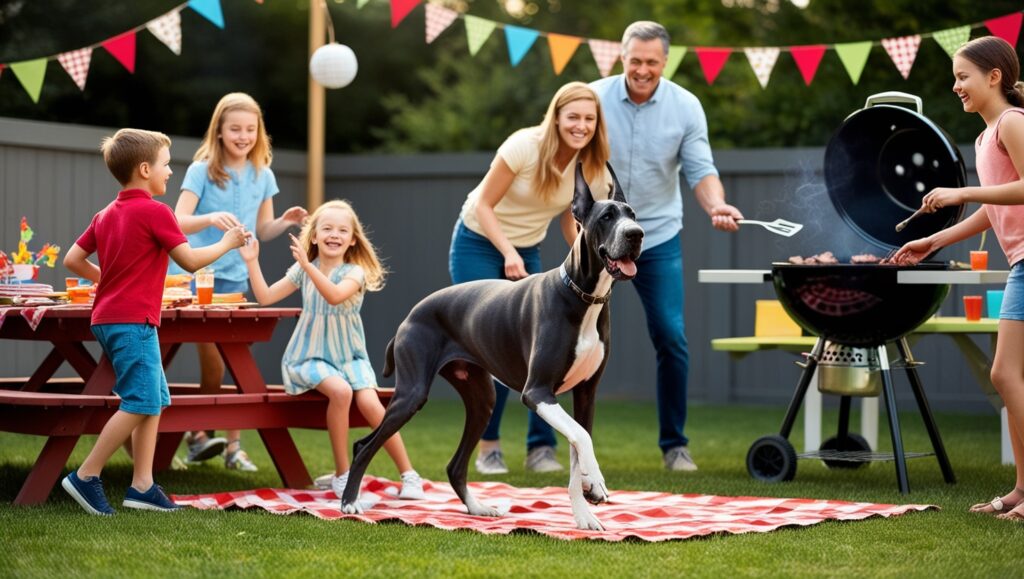
Great Danes make excellent family pets due to their gentle and loving nature. Despite their large size, Great Danes are known for being calm, patient, and gentle, especially around children. They are incredibly loyal and affectionate, often seeking close companionship with family members. Great Danes are typically very patient and protective around kids, though supervision is needed due to their size. They usually get along well with other pets and enjoy socializing with people and animals.
Considerations:
They require a spacious home due to their large size. Small apartments may not be ideal unless they get enough outdoor activity. While they don’t need intense exercise, they still require daily walks and mental stimulation. Their size can be overwhelming for small children or elderly individuals, so teaching them basic manners is crucial. Overall, Great Danes are loving, calm, and easy-going companions that thrive in a family environment.
9. Adopting a Great Dane

Adopting a Great Dane can be a rewarding experience, but it’s important to be well-prepared for their needs. Here’s what to consider before adopting:
Things to Consider:
- Size: Great Danes are one of the largest dog breeds, so you’ll need a home with enough space for them to move comfortably.
- Costs: Due to their size, they require larger quantities of food, and medical expenses (especially for conditions like hip dysplasia or heart issues) can be higher. Pet insurance is recommended.
- Short Lifespan: Great Danes typically live only 7-10 years, which can be emotionally challenging for families.
- Exercise and Training: While they don’t need strenuous exercise, daily walks and early obedience training are essential to manage their size and energy.
- Health Issues: Be prepared for the possibility of health problems, especially those related to their joints, heart, and digestion (like bloat).
Where to Adopt:
- Breed-Specific Rescues: Consider Great Dane rescues, which specialize in rehoming Danes in need of new families.
- Shelters: You may find Great Danes in local animal shelters or general rescue organizations.
Adoption Process:
- Home Check: Many rescue organizations perform home checks to ensure the environment is suitable for a large dog.
- Adoption Fees: Fees typically cover medical care, vaccinations, and sometimes spaying or neutering.
Adopting a Great Dane offers the chance to provide a loving home to a gentle giant in need, but it requires thoughtful planning and commitment.
10. Conclusion
In conclusion, Great Danes make wonderful companions due to their affectionate, gentle, and loyal nature, especially as family pets. However, adopting a Great Dane requires careful consideration of their size, health needs, and the space and time commitment they demand. With proper care, training, and love, a Great Dane can bring immense joy and companionship to any household, balancing their imposing stature with a heart full of affection.
11. FAQs
- What is the average lifespan of a Great Dane?
- Great Danes typically live between 7 to 10 years.
- How much exercise do Great Danes need?
- They require about 30-60 minutes of moderate exercise daily, including walks and playtime.
- Are Great Danes good with children?
- Yes, Great Danes are generally gentle and patient with children, making them great family pets.
- Do Great Danes shed a lot?
- They have short coats and shed moderately. Regular brushing helps manage loose hair.
- How big do Great Danes get?
- Males typically stand 30-34 inches tall and weigh 120-200 lbs, while females are 28-32 inches tall and weigh 100-130 lbs.
- Are Great Danes prone to any health issues?
- Yes, they can be prone to conditions such as hip dysplasia, bloat, heart disease, and bone/joint problems.
- Do Great Danes require a lot of grooming?
- No, they have low grooming needs. Regular brushing, occasional baths, and nail trimming are usually sufficient.
- What type of diet is best for a Great Dane?
- A high-quality diet formulated for large breeds is recommended, with meals divided into smaller portions to help prevent bloat.
- Can Great Danes live in apartments?
- They can live in apartments, but sufficient space and daily exercise are essential to keep them comfortable.
- How can I train a Great Dane?
- Early socialization and positive reinforcement training are key. They respond well to praise and treats.
These FAQs cover essential aspects of Great Dane ownership, helping potential adopters and current owners understand and care for this gentle giant.
